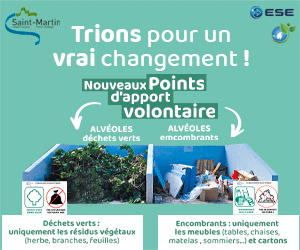Zika: the mysteries behind its propagation in Saint-Martin
Science isn’t always right, just like nature has its secrets. And probably this is why it’s hard to explain why mosquitoes bite more in the north than in the south in a territory of about 85 square kilometers, in a territory where the vegetation and terrain are the same from one point to another. Had the vegetation been more lush and the precipitation more abundant in the north than in the south, it would have been possible to explain why there are more mosquitoes in this part of the island. However, this isn’t the case on the friendly island. And yet, the number of people who have caught diseases from mosquito bites is consistently higher - and even much higher- on the French side than on the Dutch side. During the chikungunya outbreak, this was proven to be true. Currently, the same is true with zika. Last week, the Sint Maarten Ministry of Health announced 47 confirmed cases against 1,895 recorded cases since the beginning of the epidemic (early 2016) on the French side. Which is forty times more!
This difference is as impressive as it is insane. The main explanation is the use of different methods to identify those who have been infected since the ones used on the French side are more efficient. Therefore, they are more viable and most probably more credible. Because when you compare these two figures, you see that there’s a problem somewhere. It’s also important to know that patients on the French side are asked to take blood tests to confirm the diagnosis, which are covered by the Social security, unlike on the Dutch side.
In a press release published last week, Sint Maarten reported 47 cases on the Dutch side and 160 on the French side, which is misconstrued information because 160 corresponds to the number of medical consultations for zika patients.
The Saint Martin/Sint Maarten picture reflects the situation at the scale of the Caribbean. Just like with chikungunya, the French islands are the ones, which accumulate the most zika cases (when they are not the most populated islands). A recent article on the News America website listed the five Caribbean countries which are the most affected and unsurprisingly, Martinique, Guadeloupe, French Guiana and Saint-Martin come respectively in first, second, third, and fifth place and Puerto Rico comes fourth.
Oddly, the French islands are always the most at risk and the most affected. But fortunately, they are also known for the quality care in their hospitals, which attracts patients from the surrounding islands and possibly even zika patients.








